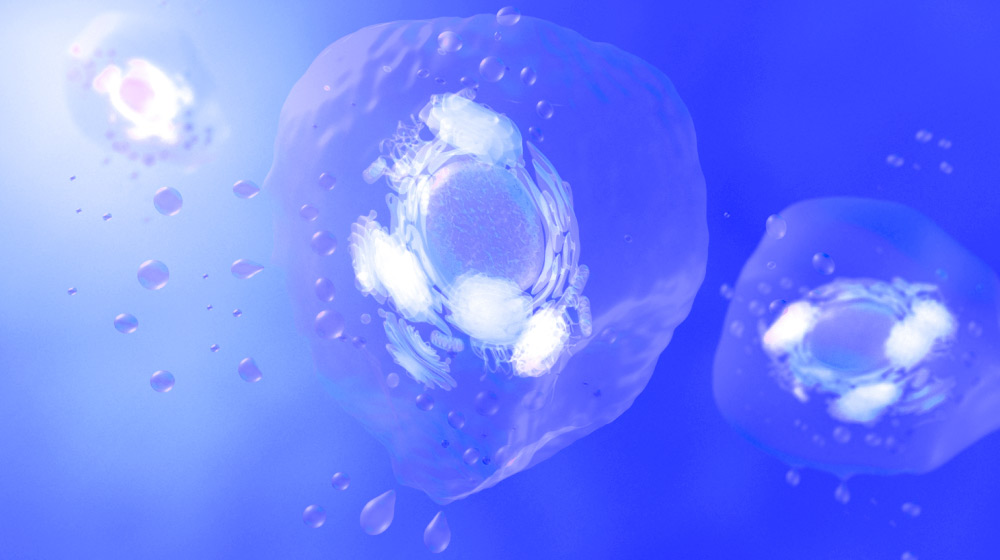Besides stem cell therapy, exosome therapy is a promising candidate for treating various health conditions at the cellular level. In this case, it helps address and resolve stubborn diseases by actively enhancing communication between cells. Learn more about exosome therapy and how it works to address joint pain and other health conditions at the source.
Exosomes: Tiny Messengers That Offer Big Results for Joint Pain
What Is Exosome Therapy?
Exosome therapy is an innovative regenerative medicine treatment that exploits exosomes’ healing potential to treat a broad range of orthopedic injuries and degenerative conditions. The therapy is introduced to the body through direct injection or intravenous therapy.
Before digging deeper into the science behind exosome therapy, let’s learn about the basics of the therapy’s primary component.
First of all, what are exosomes? It’s important to clarify that, unlike stem cells in stem cell therapy, exosomes are tiny vesicles coated by several proteins, DNA, and RNA. They are naturally released by a variety of cell types in the body and scale around 100 nanometers in diameter.
What is the role of exosomes? We all know that body cells are responsible for many essential functions within the body, from providing structure to the body to converting nutrients into energy. However, the body can’t rely on a single cell to carry out all complicated tasks but requires an extensive network of cells to ensure a smooth performance in physiological processes. That’s when exosomes come in. The leading role of exosomes is to facilitate the communication between cells and organs.
How Does Exosome Therapy Work?
When it comes to achieving optimal health, exosome therapy focuses on enhancing and modulating cellular activities by improving how cells “communicate” with each other.
Exosomes work like a messaging device, allowing better communication with distant cells. When injected, exosomes seek out diseased cells and start making their way into cells. Once inside, they message the target cell about what is going on, what course of action they should take, and what chemicals to release for the repair process, among other things. They also help cells restore missing information with its content of genetic information.
By changing the makeup and behavior of cells with nucleic acids and proteins, exosomes cause a chain reaction throughout the body. Sufficient intercellular communication ushers the body to kickstart its natural healing mechanisms in response to traumas and injuries, lowering the risk of problems like swelling and accelerating healing and recovery.
A Brief Look Into Exosome Extraction & Procedure
As mentioned earlier, exosomes are naturally produced by body cells. That’s why doctors will source healthy cells from the patient and grow them in a lab. The laboratory-controlled environment is ideal for cell growth, supporting an abundant release of exosomes. Next, doctors will carefully harvest exosomes and have them undergo a purification process to ensure top safety of the procedure.
Depending on the treatment target, doctors will assess the patient’s physicality and determine the area where exosomes will be delivered. For instance, a mixture of exosomes can be injected directly into the damaged area or administered intravenously. When using exosome therapy for skin enhancement, doctors or beauty physicians will apply topical exosomes after breaking the skin surface using techniques like microneedling or laser.
Once exosomes are penetrated, they rush to the damaged area to start the repair process, restore healthy cell activities, soothe inflammation, and regulate immune responses.
The Potential Benefits of Exosome Therapy
Many findings believe that exosome therapy holds many benefits. So far, the regenerative-based approach has been proven to be potential for the following:
- Repair damaged tissues and cells
- Enhance cell-to-cell communication
- Fend off infections
- Reduce inflammation
- Boost brain health
- Promote joint repair
- Mitigate the signs of aging
- Promote hair growth
- Restore youthful skin look
- Improve sexual desire
- Prevent genetic disorders
- Facilitate a healthy immune response
- Prevent the replication of cancerous cells
- Limit the risk of surgery
How Does Exosome Therapy Address Joint Pain?

Addressing joint pain at the source is probably one of the most prominent applications of exosome therapy since its discovery.
The vast network of body cells only works well when their line of communication is maintained correctly. That’s why exosomes are crucial for ensuring the body cells don’t lose touch, allowing them to activate the repair process in time.
Otherwise, joint pain may persist longer than anticipated, particularly when a person suffers from intricate conditions preventing them from faster healing, like chronic inflammation, genetic disorders, and autoimmune illnesses.
What Are The Applications of Exosome Therapy?
Following the footsteps of other regenerative techniques, many scientists have captured the therapeutic benefits of exosomes as a remedy for many chronic conditions and ailments. The messaging cells are applied to treat the following conditions:
Exosome Therapy in Medical Treatments
Chronic Pain
Unlike acute pain, it is more challenging to resolve persistent pain as it is often associated with underlying conditions and disease.
Exosome therapy alleviates inflammation by sending instructions for damaged cells to regenerate. The method has high success rates while delivering long-lasting results.
Osteoarthritis
Osteoarthritis occurs when the cartilage sandwiched between two joints of bones becomes inflamed or wears off over time. Without cartilage, the bones rub against each other, leading to painful feelings and stiffness in the joints when you are moving.
Although the condition mostly victimizes older adults, anyone can have it, depending on their physical condition. By injecting a high concentration of exosomes into the affected joint, the therapy promotes the natural regeneration of cartilage and reduces swelling in surrounding areas.
Wound Healing
Some people have a longer time to heal wounds and injuries due to many things. They may suffer from a hindered immune system. For others, it could be due to chronic conditions like diabetes, obesity, vascular-associated diseases, or anemia that make wounds linger for weeks.
Exosome therapy is a perfect candidate for healing wounds and damaged organs. The therapy helps tissue regeneration and repair by transferring many growth factors to the damaged areas.
Autoimmune Disease
An imbalanced immune system may cause a multitude of turbulences within the body. When a person has an autoimmune illness, their immune system can’t tell friendly and harmful cells apart. In other words, instead of eliminating toxins and foreign cells, the body wrongfully attacks its own cells.
Although the research for causes of autoimmune diseases is still underway, many people with the illness have relied on exosome therapy as a solution to boost their immunity and fight against inflammation.
Cardiovascular Diseases
Exosome therapy treats a range of cardiovascular diseases by reducing plaque building up inside the blood vessels (atherosclerosis). As this mechanism decreases the likelihood of clogged artery walls, exosome therapy helps support healthy blood flow throughout the body.
Exosome Therapy in Cosmetic Treatments

Skin Rejuvenation
Restoring skin youthfulness is another benefit of exosome therapy. As we age, our skins appear dull and less elastic as collagen production slows down. Exosome-based fillers help restore skin volume, diminish the appearance of wrinkles and fine lines, and improve skin texture.
Hair Growth Promotion
If you are experiencing bald spots due to hair thinning or hair loss, using exosome therapy is a promising solution to help you regrow a head full of hair.
Acne Treatment
Acne breakouts are a common skin condition that affects millions of people worldwide. Exosome therapy reduces the emergence of breakouts by eliminating bacteria and skin inflammation.

